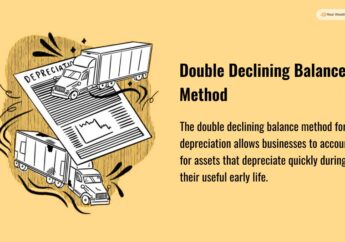What Is Inventory Turnover Ratio? – Importance, Formula, Examples, And More
by Soumava Goswami Finance Published on: 30 December 2023 Last Updated on: 30 March 2024

The inventory turnover ratio helps determine the status of inventory. It helps to find out the number of times a company has sold or replaced its inventory in a specified period of time. Having this information helps business owners determine pricing details, expenses, purchasing information, sales potential, and marketing efforts. To find out the inventory turnover of your business, divide the cost of sold goods by the average value of the inventory.
In this article, you will learn about inventory turnover ratio in general and how it works for businesses. Here, we will also discuss the formula for finding the inventory turnover ratio and what each of the factors in the formula signifies. Once you get an idea of how this ratio works, we will share with you the factors that determine good and bad inventory turnovers.
What Is Inventory Turnover Ratio?
According to Investopedia, “Inventory turnover is a financial ratio showing how many times a company turned over its inventory relative to its cost of goods sold (COGS) in a given period. A company can then divide the days in the period, typically a fiscal year, by the inventory turnover ratio to calculate how many days it takes, on average, to sell its inventory.”
The inventory turnover ratio also helps in inventory management and assists in determining the company’s sales volume. Basically, it helps businesses make better decisions on purchases, sales, pricing, manufacturing, and marketing. This ratio shows how efficiently a business makes use of its assets and inventory.
However, there are various factors that can distort inventory turnover comparisons. Some of them are seasonal factors, changing accounting policies, and rapid changes in costs.
These ratios are only useful if you want to compare similar companies. However, retailers use this ratio a lot to get an idea of the inventory or sales progress. If the ratio is low, then it shows that the business has excess inventory or went through weak sales. On the other hand, if the ratio is high, it shows that the inventory stocking is less. This can be an indication of strong sales for the business.
How Does Inventory Turnover Ratio Work?
According to the Forbes Advisor, “Simply put, the higher the inventory ratio, the more efficiently the company maintains its inventory. This is important because it costs money to maintain inventory. There is the cost of the products themselves, whether that is manufacturing costs or wholesale costs. There is the cost of warehousing the products as well as the labor you spend on having people manage the inventory and work on sales.”
Basically, a highly efficient inventory turnover system shows that the company is running healthily and has an efficient cash flow. It reveals a lot about the company’s forecasting, inventory management, and expertise in sales and marketing. With the help of the ration, you can basically learn about the direction of your company’s sales winds.
To calculate the inventory turnover, you will need to determine the average inventory. A company makes use of its average inventory value to render a stable and reliable measure. However, in many cases, a company might calculate the ratio using ending inventory numbers. But, this should be of the same period when you take the cost of the number of goods sold.
Businesses also use this formula to calculate the time period it will take to sell an inventory that is currently at hand.
What Is the Formula of Inventory Turnover Ratio?
Here is the formula for the inventory turnover ratio:
| Inventory Turnover = Cost of Goods Sold (COGS)/Average Value of Inventory |
The cost of goods sold is the cost of sales. In the inventory turnover ratio, business analysts make use of the cost of sold goods instead of sales. They do this because the value of inventory depends on its cost. On the other hand, the sales figures include the company’s markup. However, some companies can still make use of sales in place of COGS in the formula. In this case, it will increase the value of the resultant ratio.
What Are Good And Bad Inventory Turnovers?
According to NetSuite.com, “In general, the higher the ratio number, the better, as it most often indicates strong sales. A lower ratio can point to weak sales and/or decreasing market demand for the goods. However, there are exceptions to this rule. For example, high-end goods tend to have low inventory turnovers. A farmer doesn’t need to purchase a new tractor annually, and most people aren’t scooping up designer jewelry on a whim.”
All companies like to have a high inventory turnover. This is because it helps businesses to reduce the amount of capital that is tied to the inventory. Furthermore, it also increases the profitability of the business by increasing the revenue relative to the fixed costs of the business. Fixed costs include the cost of leasing the store, labor costs, and other related ones.
In some cases, a high inventory turnover shows a sign of inadequate inventory, which can cost the sales of the company.
However, it is important to know that a “Good” inventory turnover depends on the benchmark of the industry. Depending on the industry in which the business operates, if a business stocks inexpensive products, it will likely have high inventory turnover ratios. It will probably be the opposite with the sales of big-ticket items.
Wrapping Up
Hope this article was helpful for you in getting to learn about the inventory turnover ratio and how to calculate it for your business. With the help of it, you can measure how efficiently a company makes use of its inventory. To find out the inventory turnover of the company, you should divide the cost of sold goods by the average value of the inventory in the given period.
A low inventory turnover ratio shows that there is excess inventory or weak sales. On the other hand, a higher inventory turnover shows that there are strong sales or inadequate inventory stocking. Do you have more to add regarding inventory turnover? Share your ideas with us in the comments section below.
Read Also:



































































































